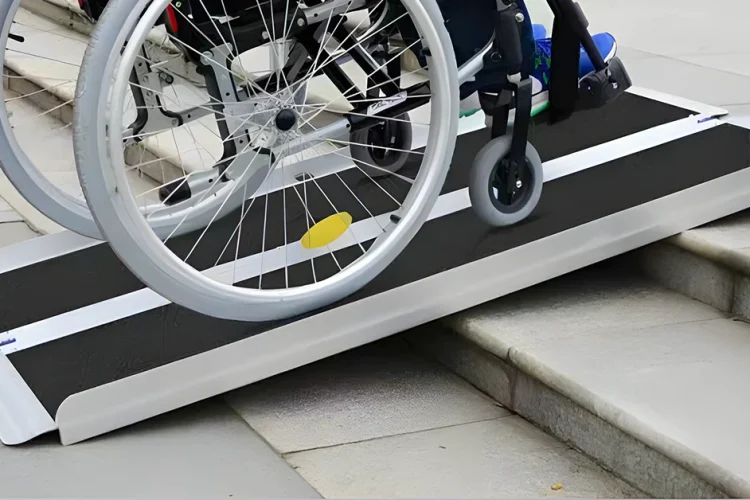One of the greatest important concerns all the ramp organization is determining the correct distance. A ramp, namely, also steep can be hazardous, difficult to navigate, and awkward to use, while an excessively long ramp may expend unnecessary resources and increase costs. Estimating the right length guarantees safety, utility, and agreement accompanying approachability standards.
Here is a stipulated guide on how to estimate the descent distance for your wheelchair ramps and what determinants to favor.
Understand the Importance of Slope
The slope of a wheelchair ramp—also called the rise-to-run ratio—is detracting for safe use. The slope is deliberate as the ratio of the upright height of the entrance point (rise) to the horizontal length of the ramp (run).
Recommended slopes:
1. For manual wheelchairs:
A 1:12 slope is mainly recommended. This 1 inch of rise requires 12 inches (1 square) of ramp distance.
2. For power wheelchairs or scooters:
A lightly steeper slope may be acceptable, but safety and ease valuable should always be prioritized.
Measure the Vertical Rise
The first step in estimating ramp length searches out and determine the upright rise, which is the crest from the ground to the entry point the ramp will reach. This may be a porch, deck, or doorway beginning.
The upright rise is the key factor that will decide the minimum length of your ramp.
Consider Landings and Turns
For lengthier ramps or areas accompanying limited space, landings and turns are inevitable to meet safety necessities and provide situated points.
Key points about landings:
- Landings should be at smallest 60 inches long and as wide as the ramp.
- Landings allow consumers to rest, change direction, and safely navigate the ramp.
- For ramps accompanying multiple divisions, each section should uphold the recommended slope.
Adding landings may broaden the overall footprint of your ramp, but it ensures approachability and user comfort.
Account for Space and Property Layout
While slope calculations specify the minimum ramp distance, practical concerns such as property blueprint and available room can influence design decisions. You can also contact trusted builder like CJ Mobility for more advice.
Consider these determinants:
- Yard or porch space applicable for ramp establishment
- Obstacles such as steps, lawn, or fences
- Desired ramp aesthetics and unification with existing architecture
- Local construction codes or homeowner association limits
By factoring precede constraints, you can regulate ramp time and orientation without jeopardizing safety.
Material and User Considerations
Various ramp materials and types of wheelchairs can affect ramp distance recommendations.
1. Materials:
Aluminum and wood ramps may demand additional support for longer lengths.
2. Wheelchair types:
Manual wheelchairs demand more gradual slopes, while capacity wheelchairs can handle slightly more precipitous inclines, though comfort and safety should always take priority.
3. User capability:
Consider the strength, persistence, and mobility of the ramp consumer.
Expert Consultation
- Assess the ground and measure the vertical rise correctly
- Recommend slope ratios and ramp elements
- Account for landings, turns, and support structures
- Ensure agreement with ADA or local construction codes
Conclusion
Consulting professional wheelchair ramp installers for exact measurements and establishment adds mental freedom, ensuring the incline meets all safety standards while providing trustworthy, long-term flexibility support.


